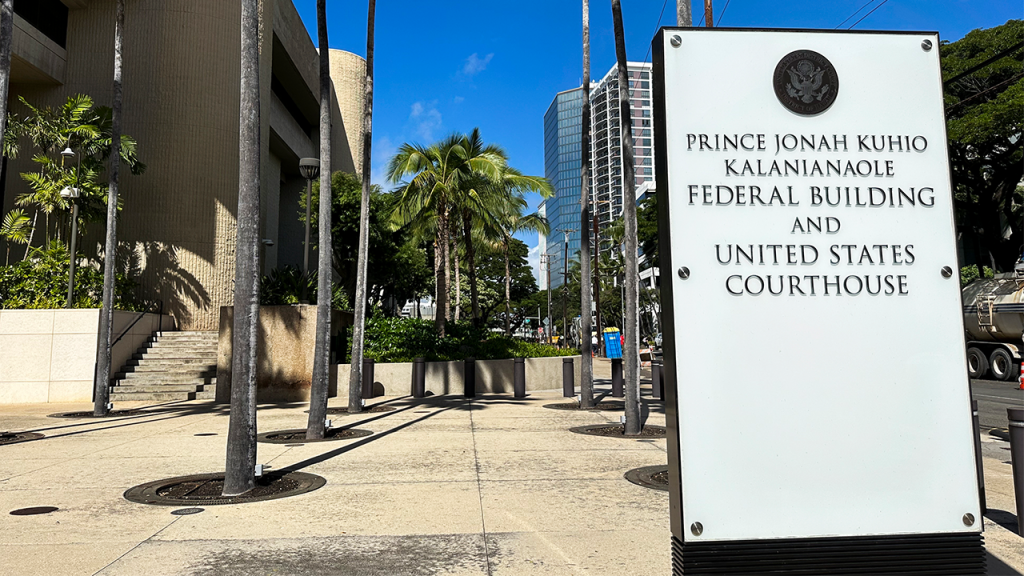A recent ruling by a U.S. appeals court calls for the re-sentencing of Kaulana Alo-Kaonohi, a Native Hawaiian man convicted of a racially charged attack on a white man, Christopher Kunzelman. The 9th U.S. Circuit Court of Appeals upheld Alo-Kaonohi’s conviction but indicated that the sentencing by a Honolulu judge in 2023—six-and-a-half years—may not sufficiently reflect the nature of the crime. The case, which dates back to 2014, hinged on allegations that Alo-Kaonohi and another man were driven by racial animus when they assaulted Kunzelman for moving into their community in Maui.
| Article Subheadings |
|---|
| 1) Overview of the Case and Initial Sentencing |
| 2) Details of the Assault and Motivations |
| 3) Appeals and Legal Proceedings |
| 4) Reactions from Victims and Community |
| 5) Future Implications and Legal Perspectives |
Overview of the Case and Initial Sentencing
The incident that led to the conviction occurred in 2014, when Christopher Kunzelman and his wife Lori Kunzelman decided to shift their lives from Arizona to Maui. Seeking a change after Lori’s multiple sclerosis diagnosis, they purchased a dilapidated oceanfront house. This decision, however, ignited a violent backlash from the local community, primarily due to racial tensions surrounding their move. In 2023, after a jury found Kaulana Alo-Kaonohi and his co-defendant Levi Aki Jr. guilty, they were sentenced to a combined total of about ten years—the former receiving six-and-a-half years and the latter approximately four. The legal findings stated that Alo-Kaonohi had acted out of racial motivation, a key point that has now been brought under scrutiny following the appeals court’s ruling.
Details of the Assault and Motivations
The attack on Kunzelman was brutal and included multiple forms of violence, such as punching and kicking, culminating in the use of a shovel. According to the jury, the racial undertones of the assault were clear; the attackers allegedly referred to Kunzelman with the derogatory Hawaiian term “haole,” which generally denotes a foreigner, particularly one of Caucasian descent. A significant aspect of the case was the intention behind the attack. The prosecution argued that the motivations were rooted in racial prejudice, while the defense contended that the ire stemmed from Kunzelman’s perceived entitled behavior rather than an animus directed specifically at his race.
Appeals and Legal Proceedings
Following the sentencing, Alo-Kaonohi pursued an appeal against his conviction on the grounds that the context of the attack had not been adequately portrayed. Concurrently, prosecutors filed a cross-appeal, challenging the judge’s initial conclusion that the hate crime enhancement could not apply to Alo-Kaonohi’s sentence. The intricacies of the case have now reached the 9th U.S. Circuit Court of Appeals, which has upheld the conviction but has not yet determined the ramifications for the length of the upcoming sentence. The ambiguity surrounding the possible duration of Alo-Kaonohi’s imprisonment adds further complexity to a case rife with social implications.
Reactions from Victims and Community
Lori Kunzelman expressed her relief at the prospect of a longer sentence for Alo-Kaonohi. She articulated the devastation the attack had caused to her marriage and family life, highlighting that the injuries sustained by her husband had progressively broken down their relationship, ultimately leading to divorce. The couple’s ongoing ownership of the contentious property remains fraught with challenges, as Lori emphasized the hostile environment they face from local residents, who view them as unwelcome outsiders. In her words, “The families there won’t allow anybody to step foot on that property. There’s so much animosity.”
Future Implications and Legal Perspectives
Looking ahead, the ramifications of this case extend beyond Alo-Kaonohi’s individual circumstances. With the Hawaii Innocence Project stepping in, there is potential for a broader legal examination regarding the contextual interpretation of racial terms used in the state. Co-director Kenneth Lawson indicated that a more comprehensive defense could have reflected the historical connotations of the term “haole” and invalidated the notion that it is inherently derogatory. This view could reshape how similar cases are handled in the future, emphasizing the need for effective representation and a nuanced understanding of community dynamics.
| No. | Key Points |
|---|---|
| 1 | Aloha-Kaonohi was initially sentenced to six-and-a-half years for a racially motivated assault. |
| 2 | The appeal primarily centers on the interpretation of motivations behind the assault. |
| 3 | Victim Lori Kunzelman emphasized the impact of the attack on her marriage and family life. |
| 4 | Future implications include a reevaluation of the term “haole” and its legal consequences. |
| 5 | Legal advocacy organizations may challenge the definitions of hate crimes in similar cases. |
Summary
The evolving legal saga surrounding Kaulana Alo-Kaonohi not only raises critical questions about the implications of hate crime laws but also highlights the complexity of racial relations within Hawaiian communities. As the U.S. appeals court initiates a re-examination of the sentencing, the case underscores the intertwined nature of history, identity, and justice, making it a pivotal moment for community dialogue and legislative scrutiny.
Frequently Asked Questions
Question: What is the basis for the hate crime designation in this case?
The hate crime designation stems from the prosecution’s argument that the attack on Christopher Kunzelman was motivated by racial animus, evidenced by the derogatory language used during the assault.
Question: What has been the response from the victims involved?
Victim Lori Kunzelman has voiced support for a longer sentence for Alo-Kaonohi, citing the profound personal impact of the assault on her marriage and ongoing sentiments of hostility from the local community.
Question: How is the term “haole” significant in this context?
The term “haole,” often interpreted as a derogatory term for non-Hawaiians, is pivotal in this case as it underscores the racial tensions and motivations perceived by both the prosecution and defense. Its historical context may influence future interpretations of racial incidents in Hawaii.


